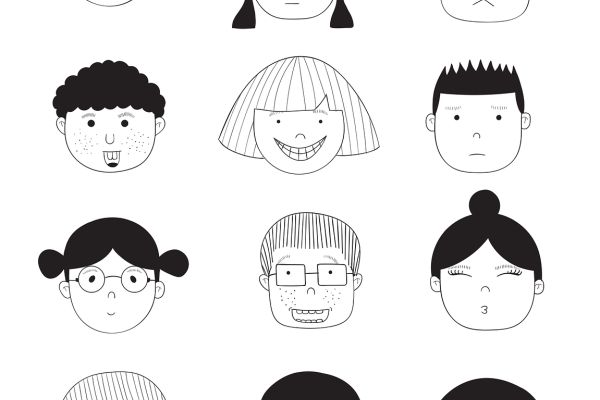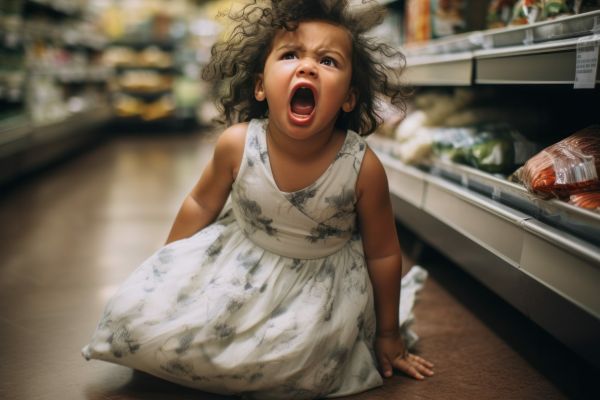Early Childhood
During this period, roughly covering ages 3 to 5, a child’s personality, interests, and social orientation begin to come into focus, but parents should keep in mind that personality traits, personal preferences, and intellectual and academic ability are not “locked in” for life during this (or any other) stage. At this age, many children will have their first formal learning experiences—including learning to socialize with others without a parent present. In some cases, parents may have to deal with a child’s aggression toward others, or with helping them deal with other children’s aggression toward them. Caregivers can take advantage of children’s openness to learning at this age by continuing to read to them often and conversing with them on a wide range of topics while introducing new words and ideas to them.
On This Page
- What are the key milestones of early childhood development?
- Is personality locked in during early childhood?
- How do young children learn to share?
- How much play time do kids need?
- Why can young children sometimes be aggressive, or even mean?
- Why do some tantrums last so long?
- What makes some children shy?
- What do children learn from picture books?
- How does conversation help children’s brains develop?
According to the Centers for Disease Control and Prevention and the American Academy of Pediatrics, by the end of early childhood, at about age 5, children can be expected to display most of the following social and cognitive skills, although each child develops differently and may achieve some milestones earlier or later than others and still be considered to be experiencing healthy development:
Social Development
- Prefers playing with others to playing alone.
- Wants to please friends, and be like their friends.
- More likely to understand and follow rules.
- Likes to sing, dance, and act.
- Is aware of gender.
- Can tell what’s real and what’s make-believe.
- Displays, and seeks, more independence in and out of the home.
- Is sometimes demanding and sometimes very cooperative.
Cognitive Development and Communication Skills
- Speaks clearly.
- Tells a simple story using full sentences.
- Uses future tense; for example, “Grandma will be here.”
- Can say their name and address.
- Can count 10 or more things.
- Can draw a person with at least 6 body parts.
- Can print many letters or numbers, and reproduce geometric shapes.
- Knows about things used every day, like money and food.
No. Early childhood is a crucial developmental stage, but the idea that personality is set in stone at this age is easily disproved. Children raised in abusive homes, for example, can grow to be emotionally healthy. And adults who have long struggled with anxiety can learn to change through psychotherapy, a field built on the idea that we can change if we really desire to do so. Parents should still do all they can to create a stable emotional environment and foster their children’s intelligence and social skills, which can benefit them throughout their lives. But biological and environmental factors beyond a parent’s control can negatively affect a child, and so parents also should not imagine that every struggle a child ever faces can be tracked to mistakes they made in early childhood.
Preschoolers are often selfish, holding onto coveted resources whenever they have the opportunity and resisting pleas to share, even though they know it’s the right thing to do. It doesn’t mean young children are jerks; other research shows that they are highly empathetic, quickly offering comfort to those in distress. Sharing toys, however, or understanding the concept of giving to help others in need may require parental guidance. Fortunately, the evidence is clear that kids can learn to share and that, like adults, helping others makes them feel good, just as it does for adults. Parents who can explain the benefits of sharing, successfully model the behavior, and convey their good feelings at being generous, are most likely to help their children acquire the habit of sharing.
Children need much more than they usually get. Studies have found that children today spend less time engaged in creative or free play, especially outside, than they did in the past, for reasons including increased time spent on digital media, parental or household routines that don’t allow for free play, and heightened concerns over safety and a decreased willingness to let children play outside unsupervised. As a result, some advocates argue, kids may be more sedentary, less creative, and less independent, than they could be.
Children act aggressively at an early age: Kids may hit, bite, push, or kick before they turn 18 months old. In early childhood, verbal aggression like teasing and name-calling become more common. Toddlers typically become aggressive because they are angry or afraid but at older ages, when children understand how their actions can affect someone else, aggression becomes more concerning. It’s at this age that bullying behavior begins.
Many bullies, rather than having emotional problems, have high levels of emotional understanding, but may have learned from other experiences that people are generally hostile, and so that not only should they react aggressively to perceived offenses, but that aggression is a reasonable response. Parents and teachers who can take steps to promote empathy can help young children learn to be more understanding of others and to approach social interactions in a healthier way.
Tantrums can be enormously distressing for parents, especially because of their apparent lack of internal logic: Small issues can spark explosions of anger that often continue long after the initial issue has been resolved. It’s important to understand the difference between a tantrum’s trigger and the factors that keep it going. Environmental issues can play a role: A crowded space, for example, especially one in which a child feels on display, can drive their stress further upward. A parent’s response to a tantrum can also extend it, because stress is contagious. When a child misbehaves, and a parent shouts, the child can become even more stressed, and both can become inflexible, fueling a lengthy tantrum cycle. When parents can recognize this cycle, they can step out of it, helping the child calm down more quickly, and, if necessary, they can further address the behavior later.
Signs of an outgoing or reserved personality can be seen, some research suggests, in children as young as four months: Those who showed the most emotional distress tended to be most likely to develop social anxiety later. But normal shyness in a child is not necessarily a sign of a concern. Temperaments often change as kids get older, and, besides, many people take a little time to warm up to new people and situations. In the meantime, parents can help highly sensitive or anxious children thrive by letting them adjust to new things at their own pace and understanding their internal anxiety, which is often closely tied to a tendency for feeling guilty, by only gently reprimanding them when they break a rule.
More than 60 percent of parents of young children read to them every day, and the benefits are clear, predicting future interest in reading as well as academic achievement. When parents read aloud to their children, they expose them to a range of words and turns of phrase that may not be part of their normal everyday conversations. Kids can learn sophisticated content as well, as a study of their retention of key concepts from books on animal camouflage and evolution showed. Above all, though, children find comfort from hearing their parents’ voices read to them, and thrive on the bonding that reading time enables.
A child’s early exposure to language is at the core of their development, predicting language skills, cognitive ability, and academic achievement. Recent research emphasizes the importance of early conversation in the development of language structures in the brain: The more conversation kids experienced, the stronger the connections between regions of the brain responsible for speech production and comprehension. These findings are part of a body of research suggesting that rich and complex conversational turns are at least as important to language development as the raw number of words a child hears.














